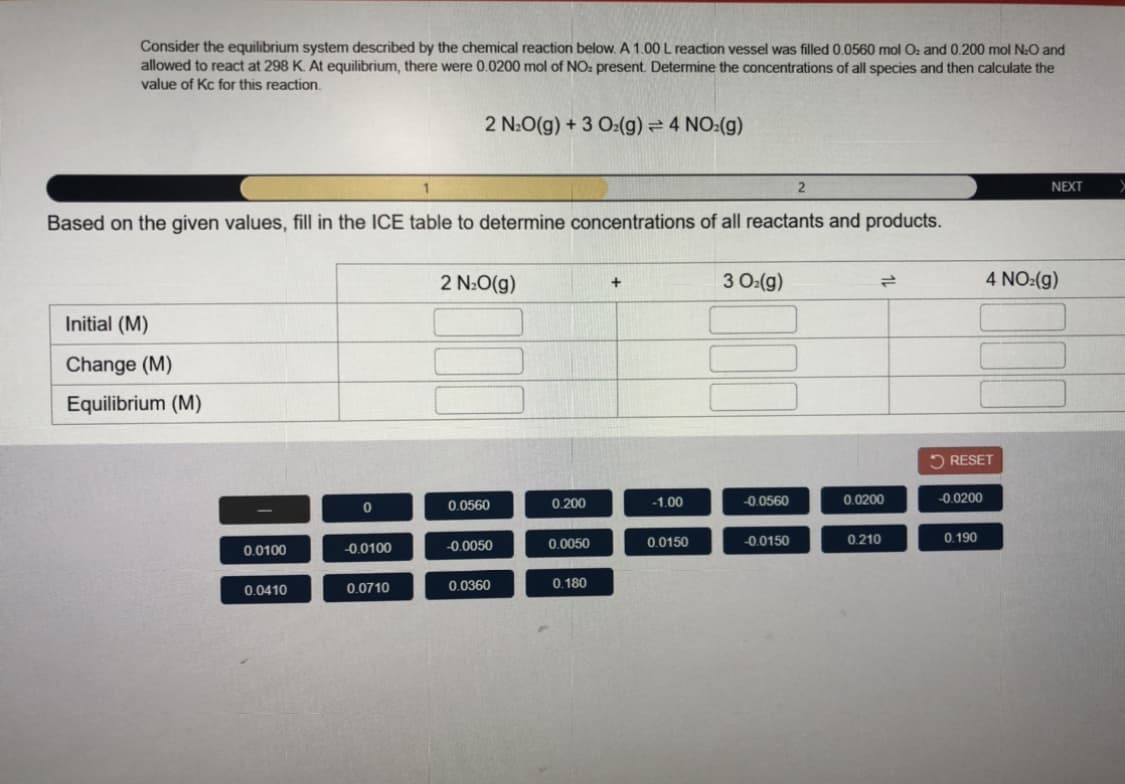Consider the equilibrium system described by the chemical reaction below. A 1.00 L reaction vessel was filled 0.0560 mol O: and 0.200 mol N:O and allowed to react at 298 K. At equilibrium, there were 0.0200 mol of NO: present. Determine the concentrations of all species and then calculate the value of Kc for this reaction. 2 N:O(g) + 3 O:(g) = 4 NO:(g) PREV Based on the set up of your ICE table, construct the expression for Kc and then evaluate it. Do not combine or simplify terms. K. = 2 RESET [0.200] [0.0560] [0.0200] [0.190] [0.0410] |0.0710] [0.0360] [0.180] (0.200F [0.0560] [0.0200]* [0.190 [0.0410]" 10.0710 [0.0360)" [0.180) 0.0643 2.57 15.6 0.390
States of Matter
The substance that constitutes everything in the universe is known as matter. Matter comprises atoms which in turn are composed of electrons, protons, and neutrons. Different atoms combine together to give rise to molecules that act as a foundation for all kinds of substances. There are five states of matter based on their energies of attraction, namely solid, liquid, gases, plasma, and BEC (Bose-Einstein condensates).
Chemical Reactions and Equations
When a chemical species is transformed into another chemical species it is said to have undergone a chemical reaction. It consists of breaking existing bonds and forming new bonds by changing the position of electrons. These reactions are best explained using a chemical equation.
This question is a two part question
part 1
part 2
![Consider the equilibrium system described by the chemical reaction below. A 1.00 L reaction vessel was filled 0.0560 mol O: and 0.200 mol N:O and
allowed to react at 298 K. At equilibrium, there were 0.0200 mol of NO: present. Determine the concentrations of all species and then calculate the
value of Kc for this reaction.
2 N:O(g) + 3 O:(g) = 4 NO:(g)
PREV
2
Based on the set up of your ICE table, construct the expression for Kc and then evaluate it. Do not combine or simplify terms.
K. =
%3D
2 RESET
[0.200]
[0.0560]
[0.0200]
[0.190]
[0.0410]
[0.0710]
[0.0360]
[0.180]
[0.200]"
(0.0560]"
[0.0200]*
[0.190
(0.0410]"
[0.0710]"
[0.0360]
(0.180]
0.0643
2.57
15.6
0.390](/v2/_next/image?url=https%3A%2F%2Fcontent.bartleby.com%2Fqna-images%2Fquestion%2F1199fdc2-4d26-4f2c-8b62-c411e8b4637a%2F02450009-86e6-48fa-ad78-4c25caec7b75%2F6umqp2p_processed.jpeg&w=3840&q=75)

Trending now
This is a popular solution!
Step by step
Solved in 2 steps with 2 images









